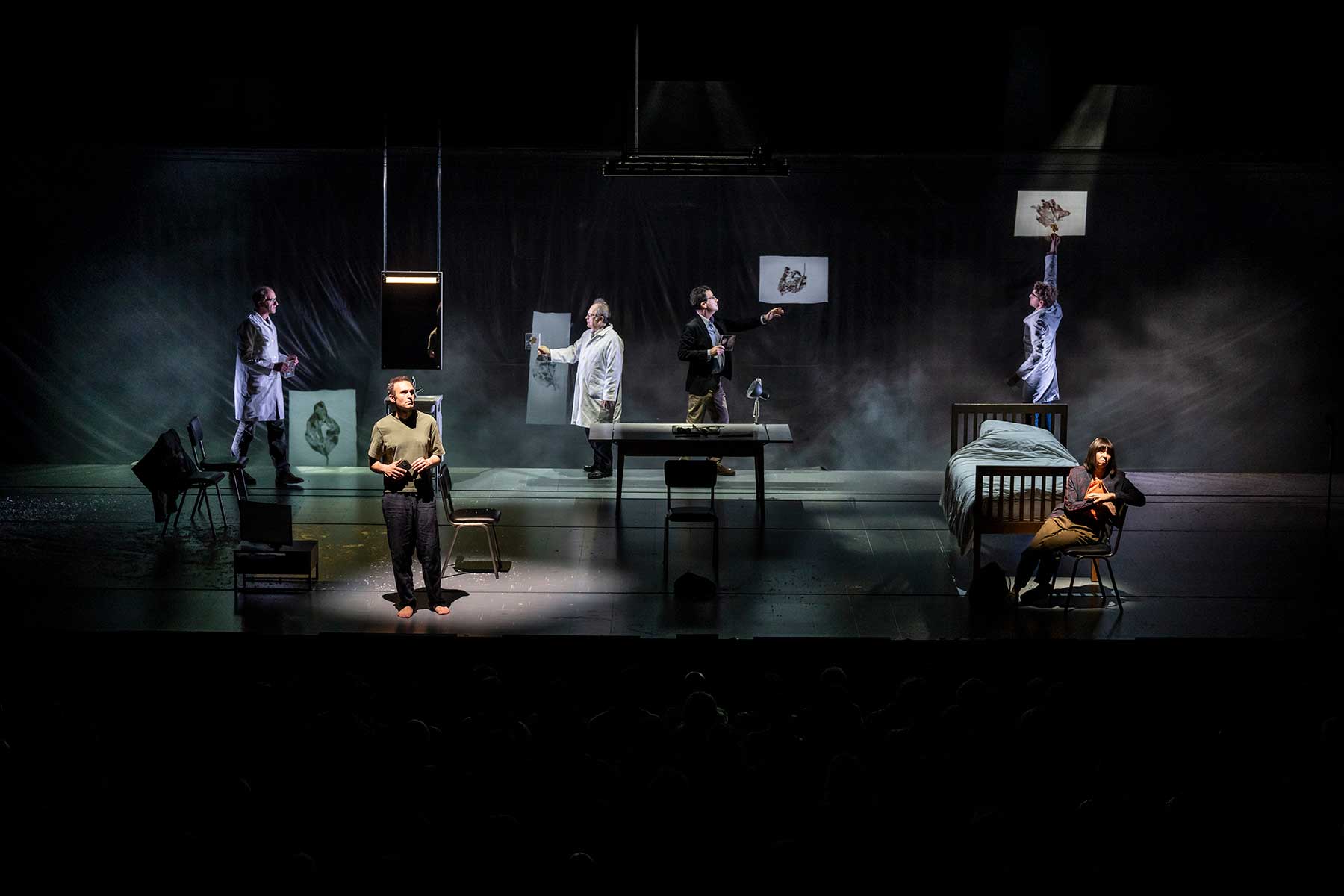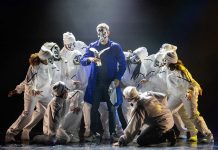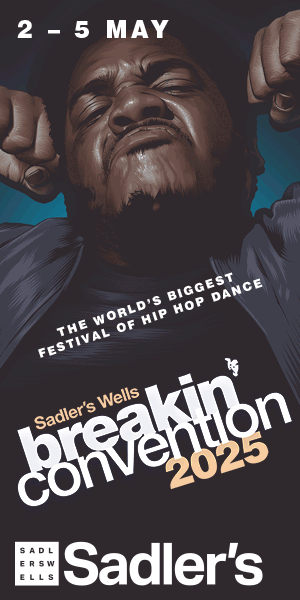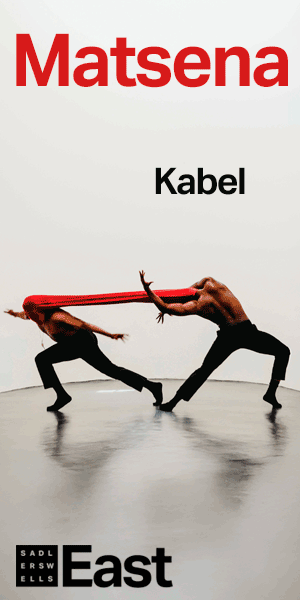
The restaging and reimagining of this piece by progressive theatre company Complicité’ starts with a performer entering to engage the audience with, what appears to be, a casual lecture on memory.
The only other items on stage are a chair and a large stone. For the next 15 minutes or so, the audience enjoys an intriguing – if not moderately entertaining – TED Talk like dissertation about the construction, role, mechanism and importance of memory; how it fuels our perspectives as human beings, what role it has on our individual living experience, and the impact it has had in influencing the evolution of the human condition.
It is certainly an interesting and diverting monologue by the performer; one fused with – what appears to be – inconsequential little asides and half-remembered anecdotes regarding his father, upbringing and the origins of the aforementioned chair.
At one point, he answers his phone and starts engaging in a conversation with a friend about memory, and the different perceptions of reality one cultivates based on differing perspectives.
As he sits down on the chair, both sides of the call can be heard, before the call ends.
He calls back and engages again with his friend. And again. And again. At a certain point, he sits on the chair, mid-conversation. The chair breaks.
At which point the performance suddenly becomes more ‘immersive’, as we – the audience – become plunged into darkness, before suddenly emerging to view the stage ‘through the looking glass’ (metaphorically speaking). To describe the nature of this transition would be to do the production a disservice. Needless to say, once it happens, nothing we experience from this point seems to obey the same laws of theatre as before.
As the performer is joined onstage by six others, the piece cleverly fuses different elements of sound, music, voice-overs, cleverly choreographed movement, live camera projections and more to create seismic shifts in setting, tone, geography and even century.
Often, more than one scene – or interaction – is held in abeyance in one area of the stage, while another is started or continued – often in conjunction with live and pre-recorded dialogue. As well as this, various other effects are used, such as a foggy, see-through screen draped across the front of the stage, and even puppetry.
Alongside these effects, many other props and items of furniture are either ‘flown in’, or brought in by various cast-members.
All these items are juggled in support of a script that switches from the break-up of a modern relationship to the scientific discovery of ‘early man’; from a young woman’s trans-global search for her ancestral identity, to a huge scientific ‘bun fight’ lines of cultural appropriation and academic discipline. The accumulated effect is dizzying, but provocative and intriguing.
If theatre is partly designed to make the viewer question their own experiences – and even their experiential make-up – then this show certainly does that.t about 270 minutes (with no interval), this is certainly not for the faint-hearted. Conceptualiser and director Simon McBurney has created an astonishingly thought-provoking, smart and humorous exploration of human creativity; one that reminds us that our memories are mere constructs, and that how we remember is proportionately connected to how we feel – or felt – about a person, place, thing or event.
All of the performers deserve equal plaudits, as do all elements of the creative (especially Set Designer Michael Levine and Paul Anderson and Christopher Shutt on Light & Sound respectively).
It is a piece that essays how our individual – even shared – memories develop through generations, help to construct and reconstruct who ‘we’ are, and bind us to ourselves and each other.
The piece is not easy to describe – or even process – but is a remarkable experience, nonetheless.
Need to know: Mnemonic plays at the National Theatre until 10 Aug 2024.





























